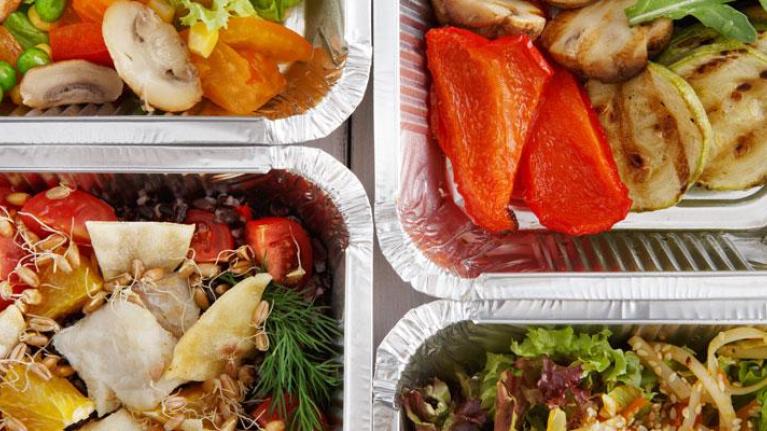
Clean, Simple, and Sensational
The ingredient switch from complex to uncomplicated.
One of the most prominent trends predicted for the year ahead is the continued movement to offer clean, healthful menu items at Fast Casual restaurants. Those who find success in this area will be the ones who offer nutritious menu items that are seasonal, simplified, and packed with flavor.
Gluten-free, grass-fed, antibiotic-free, hormone-free, and raw are among the fastest growing clean eating terms on Fast Casual menus. The appearance of these terms has doubled on menus in the last four years. According to Laurence Vernerey, the Nutrition, Health & Wellness manager for Nestlé Professional North America, “Simplicity is using ingredients that are naturally good for you. Ten years ago, health was more about having a strict, low-fat diet. Now, it’s more about how you can naturally get the benefits of existing ingredients without adding vitamins or additives.”
These terms not only signal a simplification of once-complicated dishes, but also drive profit for operators, especially as it applies to portion control. Vernerey recommends portion control as a way to incorporate options onto the menu that are perceived as less healthful, “Mini desserts are perfect for health-conscious customers looking to indulge…a little.”
“Embrace simplicity by letting guests rediscover the authentic taste of natural ingredients, which can be a challenge because guests have grown accustomed to eating foods that have been overly processed, salted, or sweetened.” A note of encouragement though: “Customers will become naturally accustomed to eating fresh, authentic, vibrant flavors the more they eat them.”
Simplicity doesn’t end with ingredients either. Vernerey suggests that Fast Casual operators simplify the way they communicate with customers by being transparent about what ingredients they use, where they come from, and how they are prepared. “Consumers today want to consciously make decisions regarding food,” she says.
According to Vernerey, Fast Casual operators should also embrace seasonality to connect with the growing consumer demand for more local, healthful food: “When vegetables and fruits are grown during the proper season and under the appropriate growing conditions, they retain most of their natural nutrients and flavor.”
Additionally, Fast Casual restaurants can take the best healthful aspects of international cuisine and mix and match them with local ingredients already in use. For example, Vernerey points to one chain offering an Asian menu that features a wrap with papaya, and another Fast Casual chain that offers chicken fajita-stuffed peppers. “Consider modernizing Southern favorites by taking a lighter approach, pairing main dishes with healthier sides to enhance an existing menu,” she adds.
Healthful menu items will benefit your customers and will boost your bottom line as well. According to Datassential, consumers are willing to pay more for menu items that include descriptors such as local, organic, hormone-free, and antibiotic-free.
"People look for fresh ingredients they know and recognize, and it’s even more prevalent among Fast Casual customers.”
– Laurence Vernerey, Nestlé Professional, Nutrition, Health & Wellness Manager
Now with a more simplified and transparent menu, it’s time to make the dishes sensational. Vernerey suggests that Fast Casual restaurants explore a variety of cooking methods to introduce different flavors and textures. A key to achieving a cleaner menu lies not only with fresh ingredients, but also preparation methods and menu item varieties. Braising, roasting, and grilling rather than frying or sautéing transforms less healthful dishes into healthier options – and 59% of customers are interested in health-conscious prep methods. When it comes to menu items, over half of consumers view spaghetti with tomato sauce as healthful, but only 33% believe spaghetti with meatballs is healthful. As far as pizza goes, 35% of customers view thin crust pizza as being better-for-you whereas only 17% view thick crust pizza as a health-conscious meal choice.
Colorful foods too are generally more appetizing to the eye and contain more vitamins, minerals, and antioxidants, Vernerey explains. Prickly pear juice adds a bright purple color to cold beverages. Mango thrives on summer menus with golden hues to brighten up smoothies or healthier desserts while turmeric can be incorporated into savory dishes for a similar golden tone. Even cauliflower can be multicolored – purple, gold, white – and used as an alternative pizza dough or as a vegan-friendly buffalo chicken alternative.
A majority of consumers believe they do not eat a sufficiently healthy diet, so Fast Casual restaurants have the opportunity to help customers reach their goal of eating more healthfully. Health-conscious consumers are less worried about low-calorie diets and more concerned with overall wellbeing, so remind customers that Fast Casual menus contain better-for-you foods by highlighting offerings that are locally sourced. Seasonality and simplicity are also keys to a successful menu, but injecting flavor and color is crucial for driving traffic and profit.
All trademarks are owned by Société des Produits, Nestlé S.A., Vevey, Switzerland, or used with permission.
SOURCES: Datassential, CPP, February 2017 | Datassential, MenuTrends, 2016 | Datassential, The New Healthy Keynote, April 2016 | Datassential, CPP, 2015 | Datassential, On the Menu, November 2016 | Datassential, On the Menu, June 2015 | Datassential, On the Menu, February 2015 | Datassential, On the Menu, May 2016